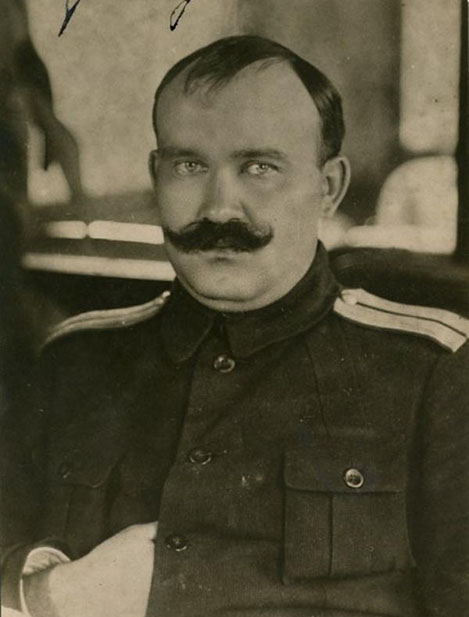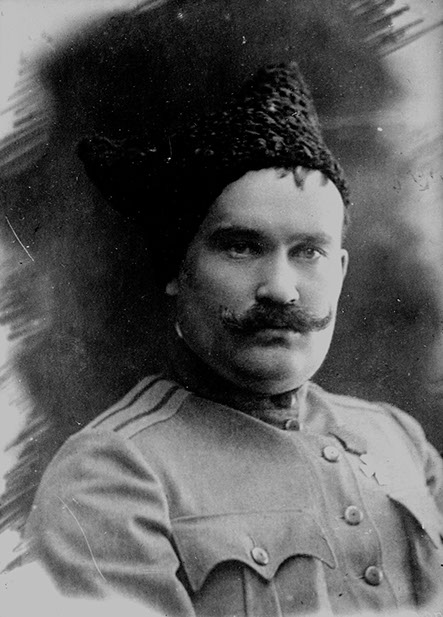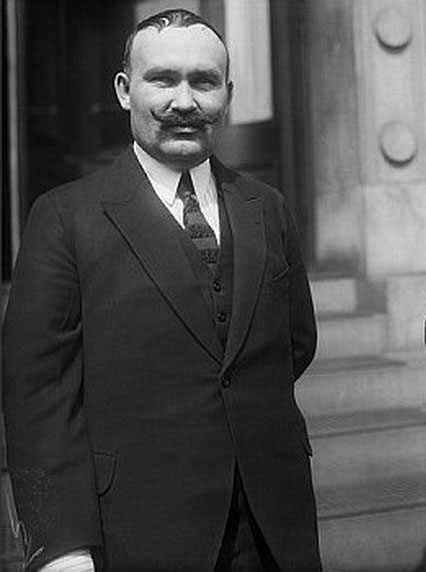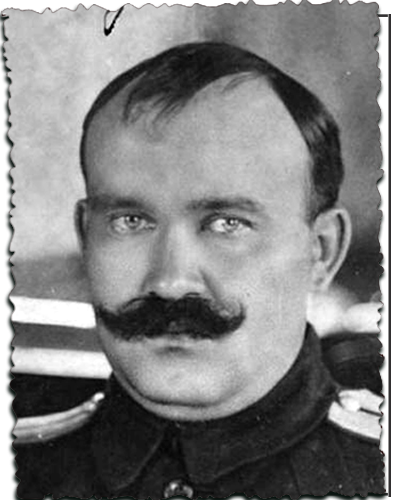



PERSONALITIES
1890–1946
SEMYONOV
GRIGORY
Leader of the White movement in the Far East

Grigory Semyonov was born into a family of Cossacks in Transbaikalia. He graduated from the Orenburg Military Cossack School (1911). He was a participant of World War I, awarded the Order of St. George, 4th degree (1914), St. George’s Arms (1916). After the February Revolution, being a Commissar of the Provisional Government, he was involved in the formation of Mongolian and Buryat regiments. In August 1917, he organized a Special Manchu Detachment and undertook a campaign against the Soviets of Workers’ and Soldiers’ Deputies that emerged in Transbaikalia.
After the October coup of 1917, he raised an uprising against the Soviet regime, thus initiating a civil war in Transbaikalia. Semyonov’s appeal to the Congress of rural residents of Transbaikalia urging to launch “a merciless struggle against Bolshevism” was not welcomed by people, so Semyonov went to Manchuria. He started to form the Special Manchurian Detachment, which was about 500 strong. On January 29, 1918, Semyonov’s detachment crossed the border, invaded and captured the station of Manchuria, and proceeded towards Chita. March 1918, saw the Semyonovites defeated by the forces of Tsentrosibir (Central Executive Committee of the Soviets of Siberia) in the vicinity of Dauria station and driven back to Manchuria.
Thanks to the anti-Soviet actions of the Czechoslovak Legion in August 1918, he gained a foothold in Transbaikalia, where he established a military dictatorship. He returned the nationalized enterprises to their owners. Semyonov carried out forced recruitment to the army, resorted to active implementation of terror, which caused a powerful guerilla movement.

From the end of 1918, he supported the policy of Japanese intervention, initially refusing to recognize the power of the Supreme Ruler Aleksander Kolchak. In May 1919, he was elected a Host Ataman [Commander-in-Chief] of the Transbaikal Cossack Army. By order of Kolchak, he was appointed Commander of the 6th East Siberian Army Corps. At the end of December 1919, he acted in the capacity of Commander-in-Chief of the troops of Irkutsk, Transbaikal, and Amur military districts. Lieutenant General (1919).
In January 1920, Kolchak gave him “the full military and civilian power over the entire territory of the Russian Eastern outskirts”. In February 1920, he formed the Far Eastern Army on the basis of three corpses of the Eastern Front. From April to October 1920, it fought fierce battles with the People’s Revolutionary Army of the Far Eastern Republic.
After the evacuation of Japanese troops from the area of Transbaikalia (July–October 1920), he fled from Chita in an airplane, the remnants of his troops retreated to Manchuria. In 1921, after a failed attempt to lead the army of the Priamursky Zemsky Krai [region], he finally left Russia.
In exile, he lived in Japan, China, the USA, and Canada. He headed the Union of Cossacks in the Far East. After the formation of Manchukuo, a state controlled by Japan, Semyonov returned to Manchuria. He was arrested by Soviet authorities after Manchuria was captured by the Red Army (1945). In 1946, after the trial, he was hanged. In 1994 he was declared non-rehabilitative.

Yesaul of the Transbaikal Cossack Host Grigory Semyonov. 1917.
Yesaul is a Cossack military rank, almost equal to captain.


Grigory Semyonov. 1918.



Ataman of the Transbaikal Cossack Host Grigory Semyonov. 1919–1920.
SMPHR. F.IX Vs-37398


Grigory Semyonov in exile. 1922.






Ataman of the Transbaikal Cossack Host
Commander-in-Chief of the armed forces of the Russia Eastern Outskirts
Whites
© 2021 The State Museum of Political History of Russia. All rights reserved. See Website Terms of Use on About Project page


